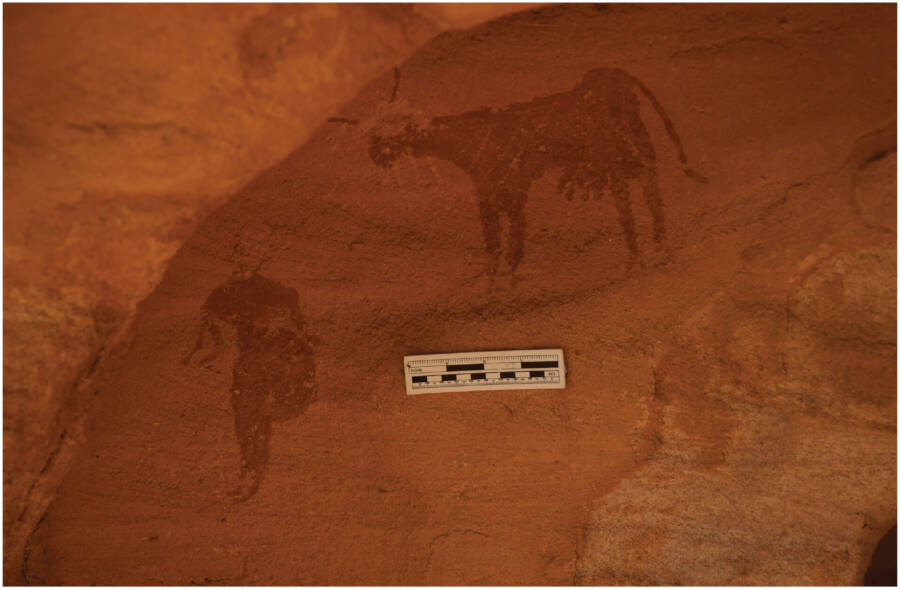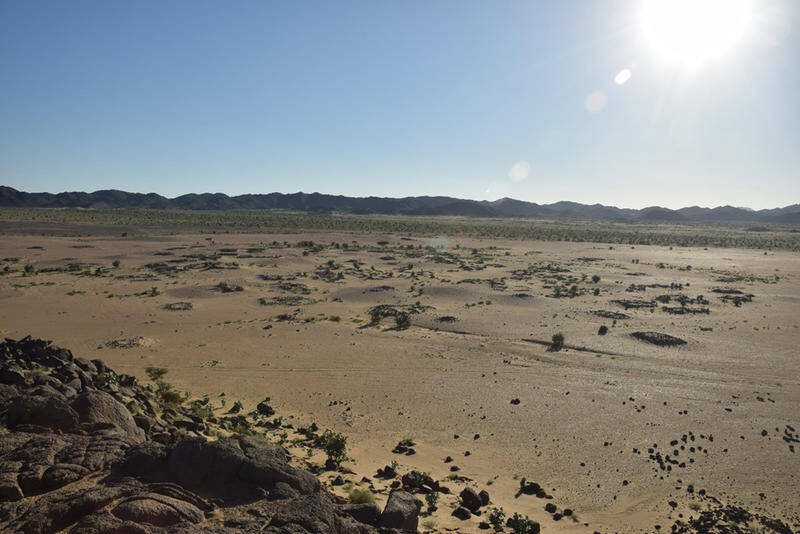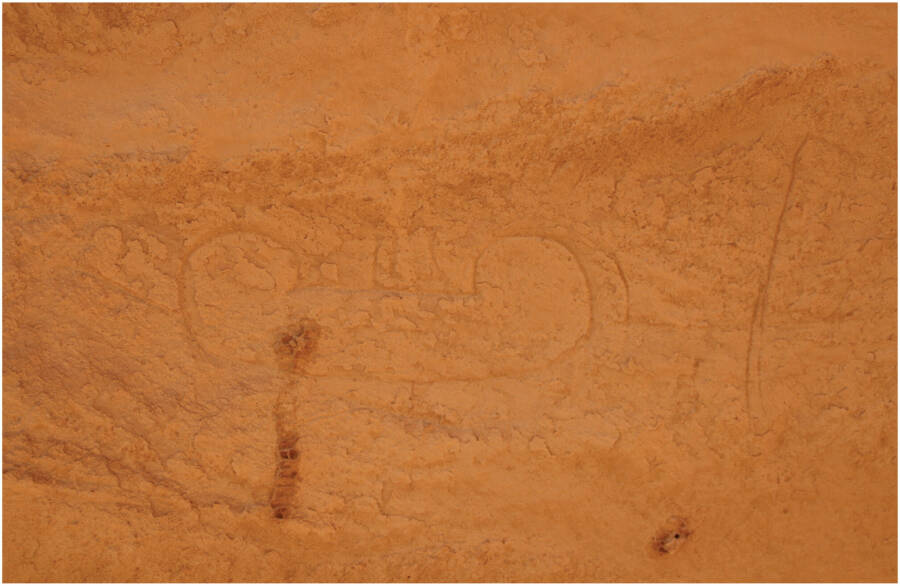This 5,000-year-old rock art discovered in the Atbai Desert was created just after the region began to turn toward the arid climate that we know today.

Atbai Survey ProjectBoth cattle and boats, depicted in the newly-found rock carvings, obviously need water, suggesting that this slice of the Sudanese desert once looked very different.
The Atbai Desert in Sudan is one of planet Earth’s most extremely dry places. It’s a flat, Martian-looking landscape that averages zero millimeters of rainfall each year. So, archaeologists were surprised when they recently came across rock art 60 miles away from the closest body of water that depicted boats and cattle.
These 5,000-year-old rock carvings hint at a wildly different ecosystem than what exists in Sudan today.
Rock Art Of Boats And Cattle Found In The Sudanese Desert

Atabi Survey Project/Yale UniversityThe Atbai Desert is an extremely hot and dry place, so the discovery of rock art depicting boats and cattle came as a surprise.
This Sudanese rock art was discovered deep in the Atbai region of the Sahara Desert, about 60 miles from the city of Wadi Halfa and Lake Nubia. According to a study just published in The Journal of Egyptian Archaeology, the 5,000-year-old rock carvings include a number of surprising illustrations, including boats and cattle.
“It is normal to find rock art in Sahara, but the richness and number of rock art sites we found was unexpected,” Julien Cooper, an archaeologist from Macquarie University and the lead author of the new study, told All That’s Interesting in an email.
He continued: “One of the interesting things was the number of rock art sites depicting cattle in this hyper-arid desert, which is a good indicator of climate change as cattle could no longer survive in this desert (scientists call this climate episode the ‘African humid period’). The discovery of boat images in the rock art was also surprising this distant from the Nile or Red Sea.”
Indeed, Cooper and his co-authors believe that the ancient rock art was created at a time when the Sudanese desert looked quite different than it does today, and when it was capable of supporting livestock.

Derek WelsbyA carving of a boat found on the roof of a rock shelter nearby.
“We hypothesize that this is connected to Nile dwelling peoples (Egyptians/Nubians) who still travelled into the desert when it was a bit wetter than its current climate,” Cooper told All That’s Interesting.
In other words, this slice of the Sahara Desert was once much greener.
What This Art Suggests About The “Green Sahara” Theory
Today, a handful of camel or goat herders still wander the deserts east of Wadi Halfa. But thousands of years ago, this dry, hot landscape was probably similar to savannah grasslands and better suited for livestock, according to what’s known as the “Green Sahara” theory.
“The local people who lived in this desert were pastoralists who kept cattle, sheep, and goat (as well as donkey),” Cooper told All That’s Interesting. “They roamed what was then a savannah-like environment from pasture to pasture to feed their herds, also burying their dead in large tumuli (stone burial mounds) at central burial-grounds. We can even still follow their tracks in this rocky desert, seeing the routes and paths from wells and pastures.”

Alberto Urcia; courtesy of Lauren LippielloA carving on a rock, likely of a boat, found in the Sudanese desert.
But, thousands of years ago, around 3,000 B.C.E., something shifted. The “Green Sahara” began to disappear as the Earth’s axial tilt changed and the patterns of the African monsoons transformed. The monsoon area once stretched much farther north than it does now, almost into Egypt, which allowed ancient Nubian people to live and raise livestock far from the banks of the Nile River.
As the climate grew drier, many people probably moved south and back toward the river. Though this was probably devastating for many ancient communities, it also laid the groundwork for the growth of the Egyptian and Nubian states.
“The ubiquity of cattle in the rock art record suggests that the region was occupied by cattle pastoralists until an as yet unknown date, possible as late as the third or second millennium B.C.E.” Cooper and his co-authors explain. “After this point, decreasing rainfall rendered cattle pastoralism impossible.”
Today, the rock art in the Sudanese desert is a stunning reminder of these ancient people, and the different world they once inhabited.
“In all to find this many new sites is extremely fulfilling and exciting,” Cooper told All That’s Interesting.
After reading about the rock art found deep in the Sudanese desert, discover the story of the Nubian Pyramids, which once held the remains of Sudan’s “Black Pharaohs.” Then, learn about the powerful Ashanti Empire that once reigned over modern-day Ghana.





